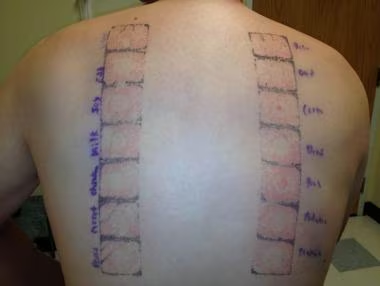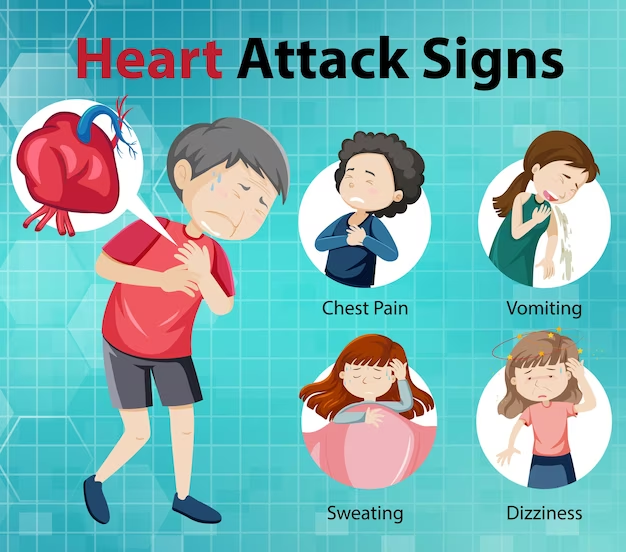Allergy , how to deal with it
Introduction:
Allergies are a common and often misunderstood group of conditions that affect millions of people worldwide. More than 50 million people in the United States have an allergic reaction each year. They’re the sixth-leading cause of long-term illness in the United States. The pathophysiology of allergy in many other otolaryngologic, pulmonary, and dermatologic disorders has yet to be fully understood.
Definition :
Allergic reaction :
An allergic reaction is the way your body responds to an allergen.
If you have allergies, the first time you encounter a specific allergen, your body responds by creating immunoglobulin E (IgE). Your immune system makes antibodies to form IgE.
IgE antibodies bind to mast cells (allergy cells) that live in your skin, respiratory tract (airways) and the mucus membrane in the hollow organs that connect to each other from your mouth to your anus (gastrointestinal or GI tract).
The antibodies find the allergens in your body and help remove them by taking them to the mast cell (allergy cell), where they attach to a special receptor. This causes the allergy cell to release histamine. Histamine is what causes your allergy symptoms.
Causes and symptoms:
The most common allergies include:
Certain foods
Food allergies develop when your body releases a specific antibody to a particular food. An allergic reaction occurs within minutes of eating the food, and symptoms can be severe. Symptoms may include:
- Itching all over your body (generalized pruritus).
- Itching in just one certain part of your body (localized pruritus).
- Nausea and vomiting.
- Hives.
- Swelling around your mouth, including your throat, tongue or face.
If you have an IgE-mediated food allergy, symptoms may also include anaphylaxis. It may present as any one of the above symptoms or a combination of the above symptoms. It usually occurs within 30 minutes of ingesting a food you’re allergic to.
In adults, the most common food allergies are:
- Milk
- Eggs.
- Wheat.
- Soy.
- Peanuts.
- Tree nuts.
- Shellfish
In children, the most common food allergies are:
- Milk.
- Eggs.
- Wheat.
- Soy.
- Peanuts
- Tree nuts.
Inhalants
Inhalant allergies are airborne substances that you inhale (breathe in). They include allergens that may affect you throughout the year (perennial allergens) and seasonal allergens.
Inhalant allergy symptoms include:
- Runny nose.
- Stuffy nose.
- Itchy nose.
- Sneezing.
- Itchy eyes.
- Watery eyes.
If you have asthma, inhalant allergies can also trigger or worsen your symptoms, including wheezing and shortness of breath.
Perennial allergens include:
- Pets. Pet allergens include certain proteins in animal fur, skin (dander), urine (pee) and saliva (spit).
- Dust mites. Dust mites are tiny, eight-legged relatives of spiders. They’re too small to see with your eyes. They live in dust and the fibers of household objects, such as pillows, mattresses, carpets and upholstery.
- Cockroaches. Cockroaches are reddish-brown insects that are 1.5 to 2 inches (in) long. The proteins in their feces (poop), spit, eggs and dead body parts can cause allergic reactions.
- Molds. Molds are tiny fungi (plural of fungus). They have spores that float in the air, like pollen. Common mold allergies include Aspergillus, Cladosporium and Alternaria.
Seasonal allergies include pollens. Pollen is microspores from trees, grass or weeds that appear as a fine dust on surfaces or float in the air. Tree pollens generally appear in the spring, while weed pollens generally appear in the fall.
Medications
Certain medications can cause an allergic reaction. The medicines may be herbal, over-the-counter (OTC) or prescription.
Common medications that cause allergies include:
- Antibiotics.
- nonsteroidal antinflamatory agents(NSAIDs).
- Insulin
- Chemotherapy drugs.
Symptoms include:
- Rash.
- Hives.
- Itching.
- Shortness of breath.
- Swelling.
Latex
Latex allergies develop after repeated contact with natural rubber latex.
Common natural rubber latex products include:
- Rubber gloves.
- Balloons.
- Condoms.
- Bandages.
- Rubber balls.
The most common reaction to latex is skin irritation (contact dermatitis). It manifests as a rash on the area of skin that touched the latex. It may develop within minutes of exposure to latex. Other symptoms may include:
- Hives.
- Runny nose.
- Itchy nose.
- Difficulty breathing.
Diagnostic allergy testing should be performed in the context of a history that suggests an allergic trigger. A positive test alone is not sufficient to diagnose an allergic condition. Positive allergy tests demonstrate sensitization but do not always indicate clinical reactivity.
It is important to diagnose the allergic trigger when avoidance can minimize or prevent the allergic reaction. Pharmacologic treatment may vary depending on whether there is an allergic versus nonallergic trigger, such as rhinitis.
Type I immunoglobulin E (IgE)-mediated allergy testing is evaluated by measuring allergen-specific IgE. This can be done through skin testing (in vivo) testing or with serological tests (in vitro). Another option is a direct challenge.
Type IV delayed-type hypersensitivity allergy is assessed through patch testing.
Patch testing:
In patch testing, the allergen is placed on the upper back under an occlusive bandage and removed in 48 hours. The skin is reassessed at 72-96 hours for erythema, papules, and vesicles under the area of contact (see the image below).
The most common patch techniques are the individual Finn chamber or the thin-layer rapid-use epicutaneous (TRUE) test. The TRUE test contains 26 preloaded ready-to-use testing strips with chemicals found in cosmetics, occupational settings, and topical medications. Other series with more allergens are available and specific variations exist based on the allergen in question.
Management and Treatment:
Avoiding allergens is an important treatment approach. However, it often doesn’t completely end allergic reactions. Over-the-counter and prescription allergy medications are also a solution to managing your allergies. These may include:
Antihistamines
- Fexofenadine.
- Loratadine.
- cetirizine
Nasal sprays
These medications are very effective and safe to use daily but they may take a few days to a week to kick in.
- Fluticasone nasal spray.
- Cromolyn sodium.
- Antihistamine nasal sprays
These medications should be used cautiously when treating allergies due to higher side effects and concerns related to long-term use.
- Oxymetazoline.
- Phenylephrine
- Pseudoephedrine
Asthma medications
- Inhaled or oral bronchodilators
- Inhaled steroids.
- Oral anti leukotrienes, including Montelukast, zafirlukast and zileuton
- Injected drugs, including omalizumab, dupilumab or benralizumab.
Immunotherapy
A healthcare provider may recommend immunotherapy (allergy shots) and/or sublingual immunotherapy (allergy drops) if you can’t manage your allergy symptoms through over-the-counter and prescription medications and avoiding allergens. The provider will expose you to small amounts of allergens and gradually increase the dosage over several months. Gradual exposure creates a tolerance to the allergen.
Nasal saline irrigation
A neti pot is an over-the-counter device that pushes a saline (salt) solution through your nasal passages. It helps clear out mucus and allergens trapped inside your nasal passages.
Consult and discussed your healthcare provider before using these above mentioned treatment.
Precautions to Take:
Read labels: Thoroughly check ingredient lists for potential allergens in foods and products.
Inform others: Educate friends, family, and coworkers about your allergies and emergency procedures.
Wear medical ID: A bracelet or necklace indicating allergies and emergency contact information.
Travel prepared: Pack necessary medications, snacks, and documents when traveling.
Regular check-ups: Periodic visits to an allergist for evaluation and updates on management strategies.
weeklyhealinghealth.blogspot.com










Comments
Post a Comment